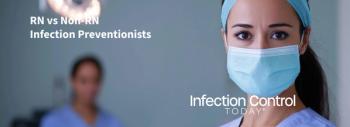
Institute of Food Technologists Issues Steps to Protect Against Illness
CHICAGO -- Norwalk-like viruses are responsible for sickening millions of people every year, and recent outbreaks on luxury cruise liners underscore the need for more awareness of the leading known cause of transmissible foodborne illness. A fourth outbreak was reported Wednesday.
Spread via food, water, contact with an infected person or items they touch, Norwalk-like viruses can linger on the periphery of food and food service. The Institute of Food Technologists addresses these viruses in two up-to-date reports; its Emerging Microbiological Food Safety Issues Expert Report and its Scientific Status Summary on Virus Transmission Via Food.
"These viruses are transmitted as a result of direct or indirect contact with feces or vomit," according to IFT food science expert Dean Cliver, author of the Status Summary and professor at the University of California at Davis. "Frequent, thorough handwashing and keeping hands out of the mouth are effective at reducing the risk of infection brought on by person-to-person contact and contact with shared items."
Norwalk-like viruses are considered to be responsible for at least 9 million of the estimated 76 million annual cases of foodborne illness. The onset of illness is usually 24 to 48 hours, and includes nausea, vomiting, diarrhea, low-grade fever and abdominal pain. The fatality rate of the illness is one-in-100,000. Suffering and recovering from the virus does not reduce the risk of re-infection.
"Those who've contracted the illness can spread it even days after their symptoms cease," said Cliver, "It's imperative they emphasize personal cleanliness, especially if preparing food, up to one week later."
The person infected by a Norwalk virus is a major factor in the occurrence and character of the disease. Susceptible populations such as the extremely young and elderly and individuals taking immunosuppressive drugs are at greater risk of contracting such illnesses.
The potential of the Norwalk virus for infecting food sources exists within fecally contaminated marine water that can affect shellfish, human sewage contaminated water sources used on fresh produce, and ready-to-eat and prepared foods contaminated by food handlers using poor hygiene. The most preventive measures to counter Norwalk viruses are proper hygiene and sanitation as related to food preparation and handling.
IFT scientific documents are accessible online at www.ift.org/sci_reports/.
Founded in 1939, the Institute of Food Technologists is a not-for-profit scientific society with 27,000 members working in food science, technology and related professions in industry, academia and government. As the society for food science and technology, IFT brings sound science to the public discussion of food issues.
Source: IFT
Newsletter
Stay prepared and protected with Infection Control Today's newsletter, delivering essential updates, best practices, and expert insights for infection preventionists.






